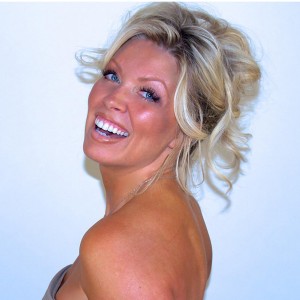- Finding Unshakable Power in a World That Wants to Pull Us ApartPosted 5 months ago
- What could a Donald Trump presidency mean for abortion rights?Posted 5 months ago
- Financial Empowerment: The Game-Changer for Women in Relationships and BeyondPosted 7 months ago
- Mental Health and Wellbeing Tips During and After PregnancyPosted 7 months ago
- Fall Renewal: Step outside your Comfort Zone & Experience Vibrant ChangePosted 7 months ago
- Women Entrepreneurs Need Support SystemsPosted 7 months ago
A 10-Step Trigger Process

By Crystal Andrus Morissette
The best way to explain a trigger is when someone says or does something that hits an “emotional nerve” within us—similar to touching a decayed tooth with the tine of a metal fork. It is a fear deeply embedded in our body and psyche.
The obvious solution for a trigger is to remove the source of the pain (i.e., the rotting tooth), but denial and projection prevent us from seeing this! Instead, we just try to avoid anyone or anything that may trigger the pain, making it about them rather than about healing ourselves!
Think of it this way: each of us has grown up believing certain personality traits are the most unacceptable, unlovable, undesirable, and unwanted. Most likely, we (or someone close to us—a parent or sibling) were shamed of behaving this same way at some point. When we stumble upon someone who behaves with these unacceptable, unlovable, undesirable, and unwanted qualities, we feel triggered. Instead of realizing they have triggered a belief in us, we reject the person. Psychologists call this “projection”—a brilliant defense mechanism of the brain.
Sigmund Freud’s daughter, Anna, first introduced the concept of projection in 1937 as a survival skill by which desires we cannot accept as our own are placed in the outside world and attributed to someone else: It’s not me. It’s you!
Iyanla Vanzant describes it this way in her book In the Meantime:
Sooner or later, we must all accept that fact that in a relationship the only person you are dealing with is yourself. Your partner does no more than reveal your stuff to you. Your fear! Your anger! Your pattern! Your craziness! As long as you insist on pointing the finger out there, at them, you will continue to miss out on the divine opportunity to clear out your stuff. Here is a meantime tip: we love in others what we love in ourselves. We despise in others what we cannot see in ourselves!
When someone can evoke extreme emotions within us—no matter if it’s your child, your parent, your partner, or a stranger on the street—we must realize it is never about them (nor is the way other people act about us). They may have been thoughtless or cruel. That’s their stuff. Our reaction, on the other hand, is entirely ours.
A defensive or aggressive reaction occurs because they have triggered a neuro-association to past pain—a feeling we’d do anything to avoid, even if it means sabotaging ourselves. Wounded people get triggered and triggered people wound. And don’t kid yourself: we are all wounded in some way!
The next time you feel yourself being triggered, getting ready to react aggressively, try this process described below instead . . . You’ll need a journal to write out your responses to questions 1 through 9.
Releasing Your Triggers
1. Who is triggering me? (Write down his or her name.) What behavior is triggering me? (Be very clear about the behavior. Write it down. Feel free to refer to the different Emotional Sub-Archetypes as examples of personalities that trigger you from my book, The Emotional Edge.)
2. How does it make me feel when I’m around someone who is acting this way?
3. Who acted this way when I was growing up? Who taught me that this way of behaving is unacceptable and inappropriate?
4. When do I first remember acting this same way myself? How old was I? What was happening? (Remember as much as possible.)
5. How did it make me feel to be called _______ (the triggering behavior).
6. How have I overcompensated to not be ________ (the triggering behavior) ever again?
7. How has overcompensating hurt me? How has overcompensating actually helped me at times? (There is a lesson or gift in everything.)
8. Am I willing to accept that all people act out in less-than-desirable ways at times and that this behavior is simply one of these undesirable ways? If so, am I willing to forgive _______ (say the person’s name from step 1) for behaving this way? If not, why not? When did I become so self-righteous and judgmental?
9. Am I willing to forgive the person who behaved this way while I was growing up? Can I also forgive the person who taught me to be ashamed about acting this way? Can I forgive myself for once acting this same way? Besides, who says this behavior is so unacceptable? (There is a gift in everything!)
10. Now, here is where the big healing takes place: Once you’ve identified the undesirable or unacceptable behavior, stand in front of mirror, look into your own eyes, and say over and over, “I am _______.” (Fill in the blank with the undesirable behavior.) Say it out loud until something in you shifts from shame, fear, or anger into neutrality, even acceptance. Owning an emotionally charged word takes the sting out of it. Once the sting is gone, you will be far less triggered and more at peace. And the really great part: you’ll stop attracting people who embody this “unacceptable” behavior!
You may think that number 10, in particular, is counterintuitive and that it goes against all you’ve learned about repeating positive affirmations to retrain your brain, but I promise you: until you make peace with the most undesirable qualities and reclaim this disowned part of yourself, nothing will give you peace long term. People will always be able to rattle your chain.
Doing the “I am _______” exercise neutralizes your deepest fears.
Very soon other people’s opinions and actions won’t affect you.
I remember the first time I actually did this process myself. I was so upset and frustrated with a family member who was always acting aggressively with me. I felt he was a demanding, difficult, angry, bossy person who often behaved like a Ruler. It was his way or the highway! So, instead of fighting with him and being upset for weeks, I tried this instead:
“I am difficult and demanding. I am an angry person. I am the Ruler!”
I said it over and over and over for a good ten minutes, maybe longer! Strangely, I found myself shifting from an emotional state of extreme discomfort (I did not like repeating this out loud as I didn’t feel I was a difficult, demanding, or angry person) into sorrow and fear, which continued to rise up into frustration and anger, and then, magically, as if some state of grace overtook me, I began to smile. I got it!
Unconsciously, my fear of being “found out” that I could be angry, difficult, or demanding was so huge that I projected this fear onto others and then did everything in my power to overcompensate; to prove that I, myself, did not own any of these “unacceptable qualities.” From undermanaging my employees, letting people treat me any way they wanted, showing up late (especially at family events), or acting like a “dumb blonde” in order to appear at ease, relaxed, and certainly not difficult or controlling, I worked hard to ensure that others saw me as “Mother Earth”—gentle, saintly, and very relaxed. This made me happy. But the alternative was more than I could bear!
I didn’t want anyone to know that, deep down, I could be bossy, controlling, and overly-protective! How embarrassing!
The gift in embracing the Ruler rather than trying to bury her in the proverbial basement (in my unconscious mind), was my beginning to see her as a gift; she brought a level of protection and security to my life. She was my “quality control.” Why should I be ashamed of her? Perhaps, she was trying to teach me that I needed more protection, security, and rules for myself?
By denying her (whether in front of others or just to myself), I was creating a serious disconnect within! The more I disowned her, the more fragmented I felt. Rather than feeling self-loving, safe, and whole, I felt more at odds with myself. Less empowered. More afraid.
Once I embraced her as the part of me that needed to protect me—to help me create rules, boundaries, and safety—the less I felt ashamed of her. She knew that I knew that she was there and that, should I need her, I would call upon her.
The Ruler certainly didn’t need to run the show or be hidden away. She was a part of me, but not me! This is what it means to integrate the wounded or fragmented aspects of ourselves back into the wholeness of who we are. As Jane Fonda said so eloquently on OWN’s Master Class, “You aren’t meant to be perfect. You’re meant to be whole.”
The wonderful part was that without this shame, I stopped projecting the Ruler onto others—which meant I didn’t need to keep attracting controlling, aggressive, difficult, and demanding people into my life to show me where I wasn’t protecting myself! The Ruler taught me how to set stronger boundaries—in my life! She impressed upon me that no one had the right to hurt, abuse, or betray me. She was the Queen and would not stand for injustice. I could finally see things clearly. It was then that I was able to heal or release many of my unhealthy relationships.
******
Crystal Andrus Morissette, Founder
From life as a homeless teen to coaching A-List celebrities, from having abs of steel and the Miss Galaxy to weighing over 200 pounds after having babies, Emotional Age and Communication Expert Crystal Andrus Morissette is a worldwide leader in the field of self-discovery and personal transformation. A media darling, she has been featured numerous times on Oprah.com, the New York Post, Fox TV, the Daily Mail, CBS Radio, CTV, CityTV, Global TV, Slice TV, the Globe and Mail, and the Toronto Star. Crystal is the founder of the S.W.A.T. Institute (Simply Woman Accredited Trainer), an empowerment coach certification exclusively for women that she created with fellow female visionaries Louise Hay, Marianne Williamson, Dr Christiane Northrup, Colette Baron-Reid, and Sandra Anne Taylor among others. Established in 2009, the S.W.A.T. Institute is now in over 30 countries.
Crystal is the author of five best-selling books, including her latest release entitled, “Simply…Woman: Stories from 30 magnificent women who have risen against the odds!” She is also certified in nutrition, sports medicine, and yoga.
Crystal’s message of resilience, strength, and inner power has allowed her to grace the stage with speakers such as Dr. Phil, Dr. Wayne Dyer, Naomi Judd, Suze Orman, Marianne Williamson, Louise Hay, Dr. Christiane Northrup, Dr. Joan Borysenko, Debbie Ford, Sarah Ferguson—Duchess of York, and many more. Crystal has coached women from all walks of life including A-list celebrities, best-selling authors, scientists, doctors, dentists, and lawyers to stay-at-home moms and struggling teens. Her passion is to get down in the trenches and help people become the (s)heroes of their own lives.
www.crystalandrusmorissette.com | www.swatinstitute.com | www.SimplyWomanPublishing.com







